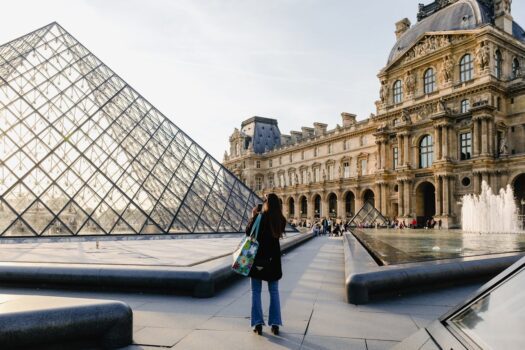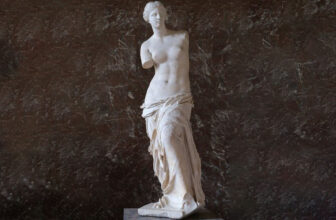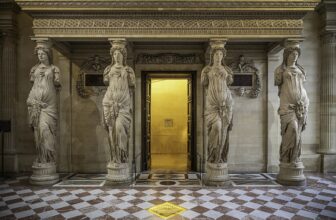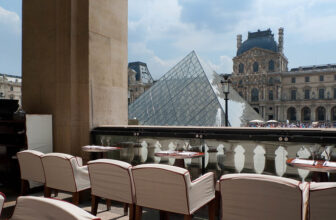The Magic of the Louvre: Inside the World’s Most Famous Museum
If you ever find yourself wandering the banks of the River Seine in Paris, chances are you’ll be drawn, like millions before you, to the majestic glass pyramid gleaming in the courtyard of the Louvre. It’s a modern jewel sitting atop centuries of history. A gateway not just to art, but to civilizations, revolutions, and the very soul of human expression.
The Louvre Museum isn’t just a place, it’s an experience, a pilgrimage, a treasure trove of some of the greatest artistic masterpieces ever created. But what exactly makes the Louvre so famous? Why is it considered one of the most important cultural institutions in the world? And what are the legendary works that people flock to see, the so-called “Big 3”?
Let’s step inside and explore.
The Heart of Paris: What Is the Louvre Museum Famous For?
The Louvre Museum, or Musée du Louvre, is the most visited museum in the world. Each year, over 10 million people pass through its glass doors, making their way through more than 72,000 square meters of gallery space.
Originally built as a fortress in the late 12th century, the Louvre transformed into a royal palace in the 16th century. It wasn’t until 1793, in the wake of the French Revolution, that it officially became a public museum.
What it’s most famous for? Masterpieces. Timeless, iconic, jaw-dropping works of art.
The Louvre is home to:
The enigmatic Mona Lisa by Leonardo da Vinci.
The sensual beauty of the Venus de Milo.
The triumphant wings of the Winged Victory of Samothrace.
But the museum’s significance goes beyond just famous names. It offers a sweeping journey through human civilization, displaying more than 35,000 works of art, ranging from ancient Mesopotamia and Egypt to Renaissance Europe and 19th-century France.
Whether you’re fascinated by classical sculptures, oil paintings, Islamic art, or Napoleon’s grand apartments, there’s something at the Louvre that speaks to every kind of curiosity.
What Makes the Louvre Museum Special?
There are great museums all over the world, New York’s Met, London’s British Museum, the Vatican Museums in Rome. But there’s only one Louvre.
So what sets it apart?
1. Unrivaled Collection Depth and Diversity
The Louvre boasts eight curatorial departments, each a universe of its own:
Near Eastern Antiquities
Egyptian Antiquities
Greek, Etruscan, and Roman Antiquities
Islamic Art
Sculpture
Paintings
Prints and Drawings
You could spend weeks, or even months, inside and still not see everything. From ancient cuneiform tablets to stained glass windows, from medieval swords to Renaissance canvases, the museum captures the entire arc of human history through objects.
2. The Architecture Itself is a Masterpiece
Few museums have a more dramatic setting. The Louvre Palace, with its grand arches and intricate sculptures, evokes centuries of regal grandeur. And then there’s the glass pyramid, designed by I.M. Pei, a bold modernist contrast when it was completed in 1989, but now iconic in its own right.
The juxtaposition of past and present is part of what makes the Louvre so dynamic.
3. It’s a Living, Breathing Institution
The Louvre isn’t static. Its collection grows, exhibitions change, and researchers constantly uncover new insights. In recent years, it’s leaned into digital accessibility, offered night visits, and embraced global partnerships (like its outpost in Abu Dhabi).
This vitality is what keeps it from becoming just a dusty monument. The Louvre is alive.
Why Is the Louvre So Important?
The Louvre isn’t just a museum, it’s a mirror reflecting the evolution of art, politics, religion, and society.
Here’s why it holds such deep importance:
1. A Symbol of Cultural Democracy
When the Louvre opened to the public after the French Revolution, it represented a radical idea: art for the people.
Previously, these masterpieces had been the private possessions of kings, emperors, and aristocrats. By transforming a royal palace into a public museum, the new Republic declared that culture belonged to everyone, not just the elite.
This shift influenced museums across the world.
2. A Global Benchmark of Artistic Excellence
If an artwork hangs in the Louvre, it’s likely considered a crown jewel of its time and place. The museum sets global standards for artistic merit, scholarly curation, and historical significance.
From da Vinci to Delacroix, from Hammurabi’s Code to ancient mummies, the Louvre serves as a canon, a carefully curated narrative of human creativity.
3. A Historical Record of Empire and Exchange
The Louvre’s collection reflects more than just France. It also tells a story of colonial expansion, global trade, war spoils, and cultural diplomacy.
That’s part of what makes it controversial at times, but also so important. It forces conversations about heritage, ownership, and restitution. It doesn’t shy away from the complexity of its treasures.
The Big 3 at the Louvre: Masterpieces That Define the Museum
Ask anyone who’s been to the Louvre, and they’ll likely tell you about “the Big 3.” These are the most sought-after works in the entire museum, so popular, they have their own magnetic pull.
1. Mona Lisa (La Joconde)
Artist: Leonardo da Vinci
Date: c. 1503–1506
Location: Denon Wing, Room 711
Let’s face it: the Mona Lisa is the superstar of the Louvre. Arguably the most famous painting in the world, her mysterious smile, subtle sfumato shading, and direct gaze have fascinated viewers for over 500 years.
And yes, she’s small. Just 30 x 21 inches (77 x 53 cm). But what she lacks in size, she makes up for in legend:
Stolen in 1911 and recovered in 1913.
Target of countless conspiracy theories.
The subject of parodies, poems, and pop culture references.
Seeing her in person, behind bulletproof glass, surrounded by throngs of tourists, is surreal. It’s less about quiet contemplation, more like visiting a celebrity.
But make no mistake: da Vinci’s technical genius and psychological depth make the Mona Lisa a true marvel.
2. Venus de Milo (Aphrodite of Milos)
Artist: Unknown
Date: c. 130–100 BCE
Location: Sully Wing, Room 346
She stands tall and serene in her hall, her marble skin glowing under soft light. The Venus de Milo, discovered on the Greek island of Milos in 1820, is one of the most celebrated sculptures of ancient Greece.
Despite her missing arms, she exudes elegance and divine beauty, believed to depict Aphrodite, the goddess of love.
Her fame isn’t just due to her form, but also her mystery. What were her original arms doing? Was she holding a shield? An apple? A robe?
Nobody knows. But the absence only adds to her allure.
3. Winged Victory of Samothrace (Nike of Samothrace)
Artist: Unknown
Date: c. 190 BCE
Location: Daru Staircase
Perched dramatically atop a stone ship, the Winged Victory seems to soar above visitors as they ascend the staircase. Carved in celebration of a naval victory, this statue captures motion, emotion, and power like few others.
The way the marble “cloth” clings to her body, rippling in unseen wind, is pure magic. Though headless and armless, her presence is overwhelming.
She doesn’t need to be complete to be complete.
The Louvre Beyond the Big 3: Hidden Gems and Deep Cuts
While the “Big 3” get the spotlight, the Louvre is filled with lesser-known wonders that reward deeper exploration:
The Code of Hammurabi, one of the earliest known legal texts.
Liberty Leading the People by Delacroix, a symbol of revolutionary fervor.
The intricate Lamassu from ancient Mesopotamia.
Vermeer’s delicate The Lacemaker.
Napoleon III’s opulent apartments, full of crystal chandeliers and red velvet.
In every room, history whispers through the walls.
Tips for Visiting the Louvre Like a Pro
Go early or go late. Avoid midday crowds.
Use the Pyramid entrance for the drama, but the Carrousel entrance for speed.
Map your visit. It’s impossible to see it all, plan highlights.
Don’t just follow the herd. Some of the museum’s richest experiences lie in quiet galleries.
Pause. Breathe. Look slowly. Art reveals itself over time.
The Louvre as a Human Achievement
The Louvre isn’t just a building. It’s a testament to what humans can create, preserve, and pass on.
It’s a place where time collapses, where you can stand between an ancient sarcophagus and a 19th-century oil painting and feel connected to all the lives that came before.
It’s a reminder that art matters. That history matters. That beauty can transcend borders, languages, and centuries.
And that, perhaps, is the real magic of the Louvre.




